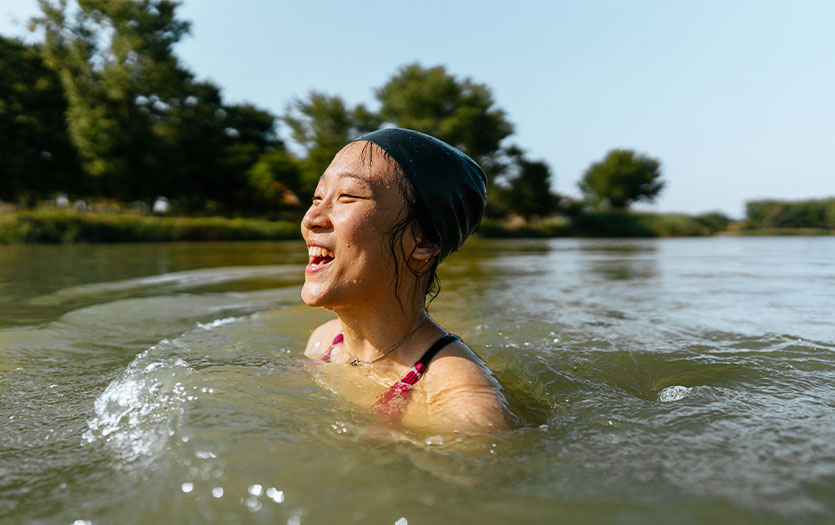
This post was written by Jennifer Konger, Trauma Program Manager, Parkview Trauma Services.
At every age and at every skill level, swimming always demands precautions and attention to safety. In this post, we brush up on the basic guidelines for water play, for the young and adult.
Reminders for children and parents
Drowning or near-drowning events continue to be a common summer occurrence seen in the Pediatric Trauma Center. Prevention is the key. The American Red Cross advises multiple layers of protection.
- Supervise children when near or in water. It only takes a moment of taking a phone call or casting a fishing line for a child to be out of view.
- Brightly colored swimsuits are helpful in keeping a close eye on a child.
- Inexperienced swimmers should wear a life jacket. When boating, life jackets should always be worn.
- Take the time to teach your child proper swim techniques and water safety skills.
- Remind children to ask permission to go swimming before entering the water. This helps ensure there is an adult supervising them.
Reminders for children and adults
Some water safety tips for all ages include:
- Don’t swim alone.
- Always swim sober.
- Don’t swim after dark.
- Know the water’s depth prior to diving.
Water rescue
If actively attempting to rescue someone from drowning, always remember to have a floatation device with you. If anyone else is available, have them call 911. Once retrieved from the water, check for breathing and pulses, if not present begin CPR.
Watch the video: How to perform CPR for a drowning victim



